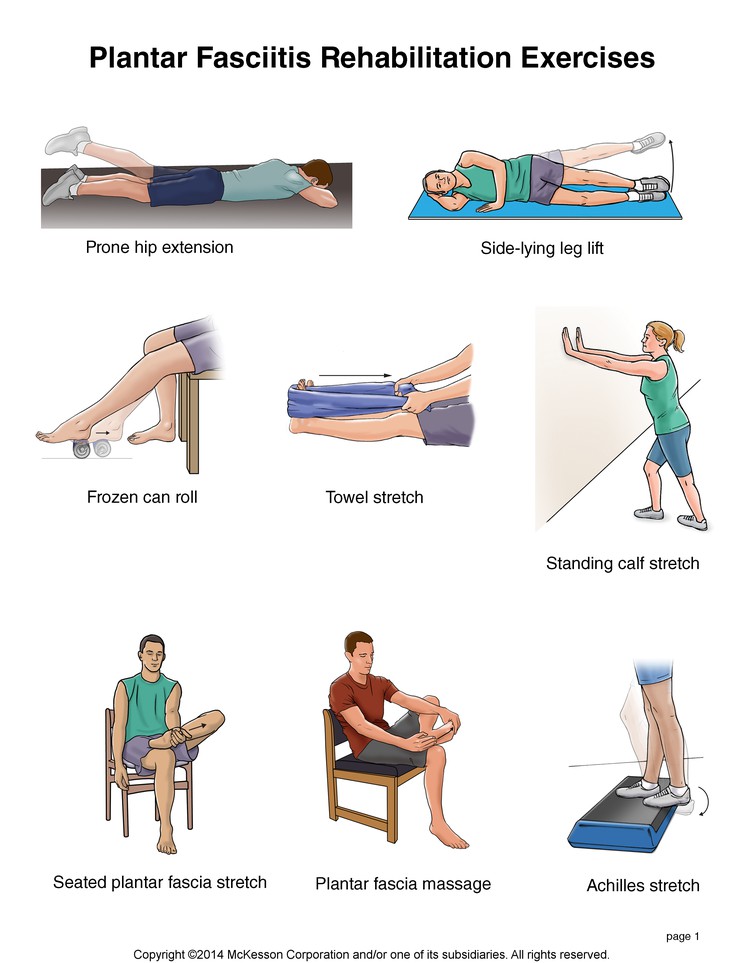What is Plantar Fasciitis?

Plantar fasciitis is a condition that affects the foot. Usually, it’s concentrated to the heel and arch. It affects a disproportionate number of highly active individuals. Furthermore, anyone overweight or wearing shoes without proper support are also at risk.
Our mission as physical therapists is to help our patients find healing through safe, natural means. We mostly guide them through exercises that trigger the body’s inherent healing mechanisms. Often, the acute or chronic injuries they are recovering from are painful and debilitating. Injuries can inhibit mobility and severely affect their ability to live pain-free, independent lives. Therefore, we take our vocation seriously.
In this post, we’ll discuss plantar fasciitis, its symptoms, treatment and more.
Plantar Fasciitis: An Overview
First and foremost, the plantar fascia is a thick band of tissue that runs across the bottom of the foot and connects the heel bone to the toes. It supports the arch of your foot by stretching slightly when we step down. Then, it shortens again. This maintains the arch and supports our weight as we move.
The plantar fascia absorbs a great deal of weight when we’re walking. It receives particular stress when we’re running. Therefore, it’s prone to injury. Due to regular, repeat stress, tiny fibers in the ligament begin to tear. Ultimately, this causes severe pain and swelling.
Symptoms
Usually, the pain is at its most severe first thing in the morning when we take our first steps of the day. When we sleep, the plantar fascia shortens. Therefore, when we first stand in the morning, the torn fibers abruptly stretch. Basically, this is what causes the pain. As the foot warms up, the pain usually subsides. However, plantar fasciitis pain may diminish for a time only to return again later.
Also, the pain is particularly potent if we’ve been sitting for a long time. Stabbing or burning in the heel is the feeling that most report when dealing with plantar fasciitis.
3 Helpful Exercises for Plantar Fasciitis
Until you can make an appointment with a physical therapist, these exercises can help. You can perform each of these safely on your own. If done correctly, they should alleviate plantar fasciitis pain. However, it’s always best to consult your physical therapist to develop the best exercise regimen or therapy technique for you.
Tennis Ball Roll
First, get your hands on a tennis ball, rolling pin or frozen water bottle. Sit down and place it directly under the foot. Then, gently roll it underneath the arch of your foot with varying pressure. Continue for three to five minutes.
Towel Stretch
This is a specific form of resistance training that can help to mitigate your pain. Take an ordinary bath towel and wrap it around your foot. Sit down, then extend your leg straight ahead. Very gently, pull the towel toward you. It’s important to keep your leg stable.
Freeze in this position for about 30-45 seconds. Take a short break, then repeat it twice.
Toe Stretch
While sitting, push your leg forward so that only your heel’s touching the floor. Bend towards the floor and grasp your big toe, bending it towards you. Flex your ankle upwards so that it comes away from the floor.
Hold this position for 30 seconds. Then, take a break and do it between two and four more times.
Conclusion – Farmingdale Physical Therapy
Of course, if you’re experiencing plantar fasciitis pain, you should always discuss it with your doctor or physical therapist. While you can partially ease pain yourself, there are limitations. A certified physical therapist can develop individual routines that cater to you and can deliver optimal results.

